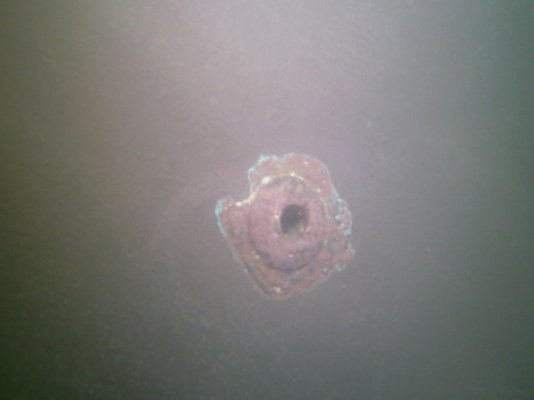DLETF
Veteran Member
- Joined
- Sep 28, 2017
- Messages
- 48
- Location
- USA
- Vessel Name
- Buster
- Vessel Make
- North Sea Cape Classic 30
The bottom of my trawler was painted with Interlux Micron CSC antifouling paint in June 2019. The prior bottom paint was also Interlux Micron CSC paint. The cuprous oxide content of the paint is 37%.
The attached photos taken on January 7, 2020 and show some corrosion around 2 of the thru hull fittings. No corrosion was noted when the bottom was inspected in September 2019.
A galvanic isolator is installed in the boat and the boat is slipped in a marina. The thru hull fittings are all bonded together with a green wire.
I have the following questions/comments:
1. Am I correct to assume that the corrosion shown in the photos is related to electrolytic corrosion and not galvanic corrosion?
2. If the corrosion is the result of electrolytic corrosion, am I correct to assume that removing the entire bonding green wires should solve this issue?
Thanks
The attached photos taken on January 7, 2020 and show some corrosion around 2 of the thru hull fittings. No corrosion was noted when the bottom was inspected in September 2019.
A galvanic isolator is installed in the boat and the boat is slipped in a marina. The thru hull fittings are all bonded together with a green wire.
I have the following questions/comments:
1. Am I correct to assume that the corrosion shown in the photos is related to electrolytic corrosion and not galvanic corrosion?
2. If the corrosion is the result of electrolytic corrosion, am I correct to assume that removing the entire bonding green wires should solve this issue?
Thanks


